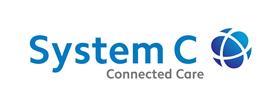Dr Jonathan Bloor argues that clinical value is the key to adoption of emerging tech
![]()
This is paid-for content from our commercial partners. Find out more
In February 2019, the Department of Health published a notice that the health secretary had “ordered the removal of pagers for non-emergency communications by the end of 2021”. A familiar theme, but with a commanding new tone. Since then, things have started to pick up pace: NHSX this month set up a new framework, allowing NHS organisations to fast-track the procurement of communication services from a shortlist of suppliers in order to meet this deadline.
Sponsored by
But has it come too late? We founded CareFlow Connect 13 years ago in July 2007 when, as frontline hospital doctors working in the NHS, we witnessed the dire consequences of breakdowns in communication. We had identified a set of emerging technologies that could help overcome the communication challenges presented by the pager and the fax. For context, at this point Facebook had been up and running for three years and Twitter for one; it was another two years before WhatsApp came on the scene. These technologies have since gone on to transform the way the world communicates and works, but healthcare is left playing catch-up.
While most of the NHS continues to do as it has always done – rely on pagers, landlines, repeated face-to-face handover meetings and scribbled communications on paper to coordinate care for patients – many clinicians have turned to WhatsApp to help communicate with colleagues. This is despite the fact that the solution to healthcare’s care coordination problem is much more than just secure messaging. Is it possible to persuade these clinicians to ditch WhatsApp and adopt a more appropriate care coordination tool?
Our experience suggests a resounding “yes”. Clinicians will move on from WhatsApp, or move away from paper and pagers, if they are given an alternative which adds significant clinical value above and beyond just secure messaging.
Ironically, the NHS had, finally, in the last 12 months started to scale the adoption of secure, healthcare compliant messaging and coordination apps. However, covid-19 has changed everything. We supported NHS trusts like North Bristol and Kettering where they rapidly extended deployment of CareFlow Connect Trust-wide – adding literally thousands of users in a matter of weeks, as the need for fast, clinically robust, communications between teams (away from the bedside whenever possible), the ability to share photos, and the removal of paper, all became paramount. The massive increase in uptake demonstrates that clinicians are more than ready to adopt new technologies, and quickly, if they work for them. What we have learnt is that the right tool is one that is designed from the outset for clinical workflows, one that is intuitive and easy to use but which meets the stringent IG and safety requirements of the NHS, and one which is tried and tested at volume in the field.
What we have learnt (useful, usable, used)
To add clinical value, a care coordination app must:
- Integrate with the PAS/EPR/shared care record
- Cover all the key components of team based clinical workflow (patient list management, handover, task management, push alerting, patient identified messaging and photos, team to team referral)
- Be flexible enough to adapt to the multitude of different workflows and types of care but structured enough to support an organisation’s need for standard operating procedures and clinical governance
- Finally, data is key. An integrated care co-ordination app provides a wealth of data for understanding what is going on in an organisation – the combination of both clinical record information and analytical data is key to improving workflows. You can’t interrogate any data held in WhatsApp.
- Work with and support cross organisational workflows, and not be siloed to organisations (ie supporting integrated care as well as acute care)
- Support BYOD
- Meet all the clinical safety, cybersecurity and information governance requirements of the NHS
- Be built on a solid business case and sustainable business model. There are simply too many risks in basing core clinical systems on free software and speculative business valuations that are incompatible with the reality of long-term NHS service provision.
We need to get going and get care coordination technology adopted at scale to finally “purge the pager”. And, once adopted, we must make sure that this time we continually evolve and adapt to emerging technologies – so future care providers never again find their work hampered by having to use outdated technology and the wrong tools for the job.
For more information click here.































